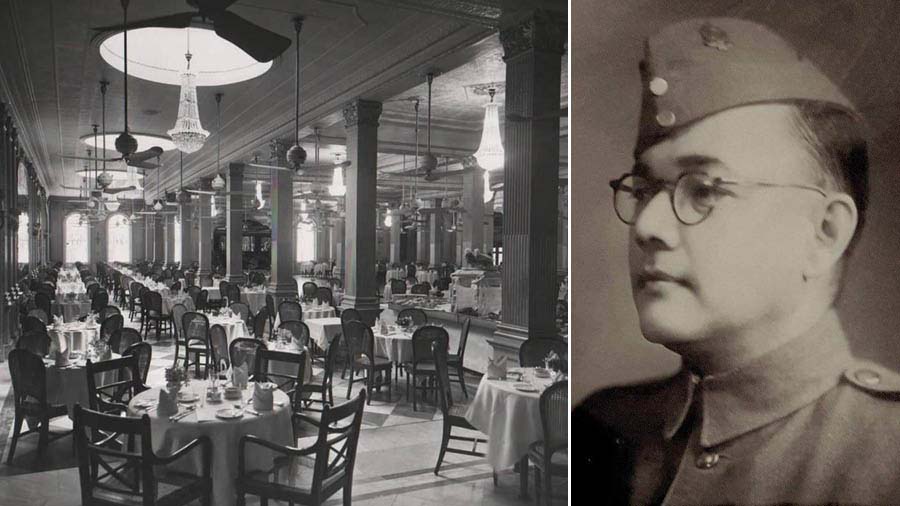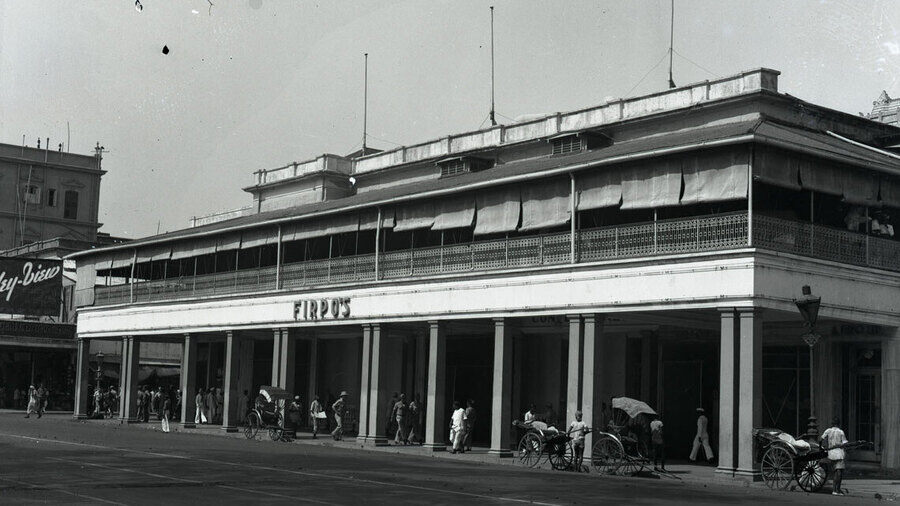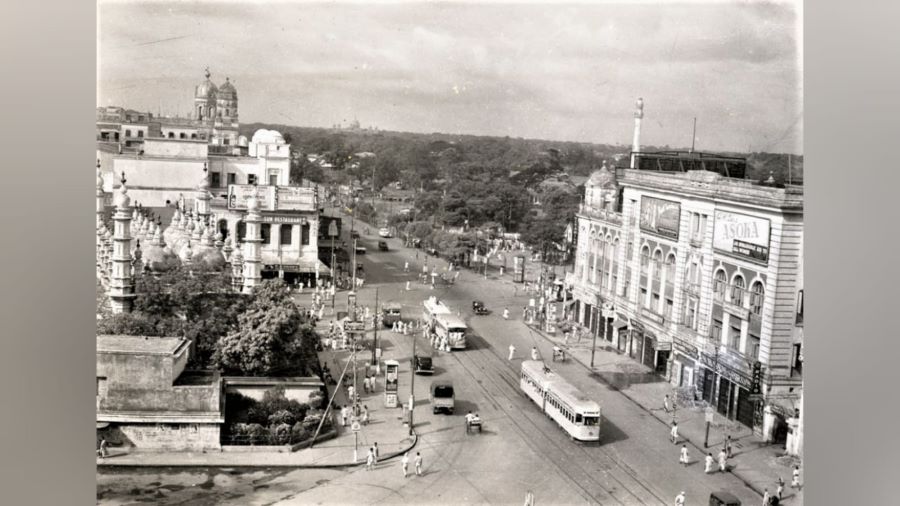August 12, 1938, saw Netaji Subhas Chandra Bose being felicitated at a civic reception in (then) Calcutta after being elected as the youngest president of the Congress party at the Haripura Congress session. The venue was an elite restaurant on Chowringhee — Firpo’s.
The reception, organised by the then mayor of Calcutta, Abul Kalam Mohammed Zakaria, was a tea party attended by almost all intellectuals and celebrities of the city. The event was reported in the official gazette of the Calcutta Municipal Corporation on August 13, 1938.
This is perhaps the only recorded evidence of Netaji’s association with a heritage restaurant of Calcutta.

The event was reported in the official gazette of the Calcutta Municipal Corporation on August 13, 1938
Even decades after Netaji’s mysterious disappearance, any place in Kolkata with his footprints is considered a heritage spot and continues to draw visitors and now, digital content writers, bloggers and vloggers.
But his continuing popularity also opens up the possibility of fictionalised history without any testimonial evidence. Netaji’s name is now associated with many such places, especially eateries. Social media is flooded with stories of Netaji’s fondness for a century-old pice hotel behind Presidency College, where he is believed to have been a frequent visitor as a student, though there is no documentation to prove that he ever went there. There is a hundred-year-old sherbet shop at College Square that displays a list of famous customers and Subhas Chandra Bose’s name features there as well. Both shop owners now claim that Netaji not only visited during his student days but also met revolutionaries there.
A century-old telebhaja shop near Hedua off Bidhan Sarani, famous for distributing free telebhaja every January 23, the birthday of Netaji, also claims its close association with the leader. Here, the story goes that while studying at Scottish Church College, after being expelled from Presidency, Subhas frequented this shop to eat telebhaja and continued to do so even after becoming a national leader.
But unfortunately, Netaji’s presence at the legendary Firpo’s, though documented, is seldom mentioned or talked about.
Situated on Chowringhee Road, just next to what is today The Oberoi Grand, was a dreamland for diners who loved Continental food, western music and cabaret dance. Its well-ventilated rooms with electric fans, a breathtaking view of the Maidan and a wide array of bakery items were a big draw. Firpo’s was shut down in the late 1960s and the beautiful colonial building was converted into an ugly-looking market named Firpo’s Market.
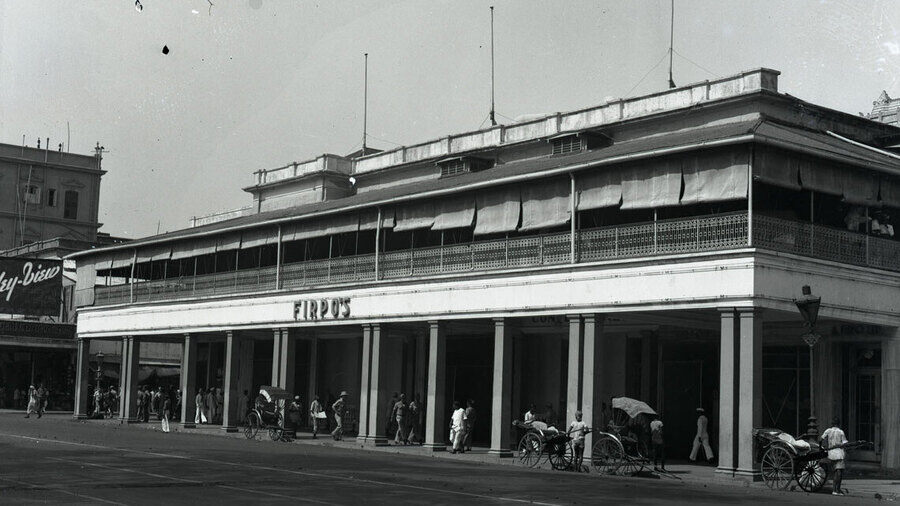
Situated on Chowringhee Road, just next to what is today The Oberoi Grand, was a dreamland for diners who loved Continental food, western music and cabaret dance
Frank Bond; Bond Photograph Library, Digital South Asia LibraryThe stretch from The Statesman House at Chowringhee Square till near up to Bhowanipore was the upscale high street of India. Dotted with extraordinary colonial buildings such as The Statesman House, The Bristol Hotel, Grand Hotel, department stores likes Whiteway & Laidlaw and Hall & Anderson, Army Store, cinemas like Metro, clubs like Bengal Club, institutions like the Indian Museum and Asiatic Society, and corporate house like the Indian Tobacco Company (now known as ITC) and Imperial Chemical, it was a buzzing area and a haunt of the the city’s rich and famous.
Today’s dilapidated buildings, encroached pavements and messy traffic have turned Chowringhee into an ugly version of its golden era.
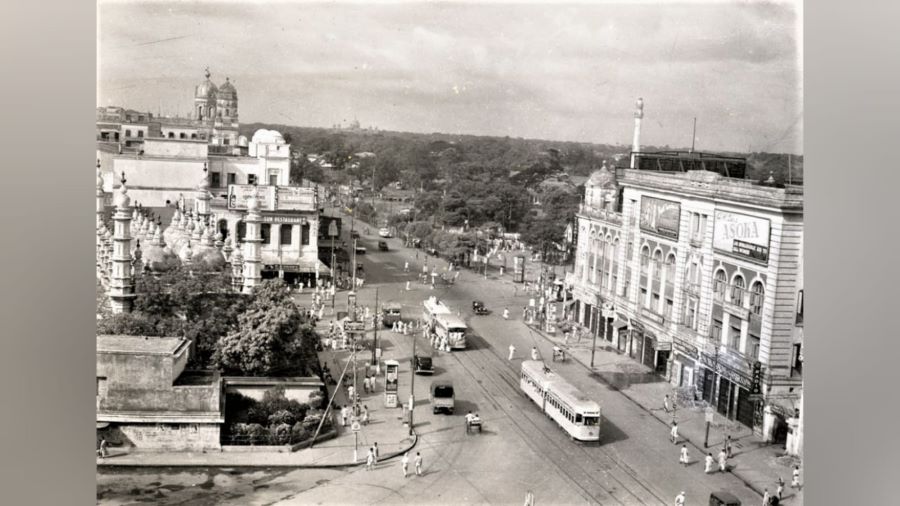
The stretch from The Statesman House at Chowringhee Square till near up to Bhowanipore was then the upscale high street of India
Frank Bond Collection/Digital South Asia LibraryIn its heyday, Firpo’s was only second in popularity to Peliti’s Restaurant of Dalhousie Square. The iconic restaurant was opened in 1917 during World War I by an Italian named Angelo Firpo. It started as a tea room selling cakes, pastries and other confectionery items and soon turned into a full-fledged family dining hall targeting European and American residents of Calcutta. Such was the reputation of its authentic Continental fare and extraordinary ambience, that the Governor of Bengal made it his choice of venue for Sunday lunches.
By the mid-1930s, the fame of Firpo’s was at its height with five-course meals served in airy rooms with tastefully decorated illumination and its open-air café on a long verandah that offered a grand view of the busy Chowringhee Road and the lush green Maidan.
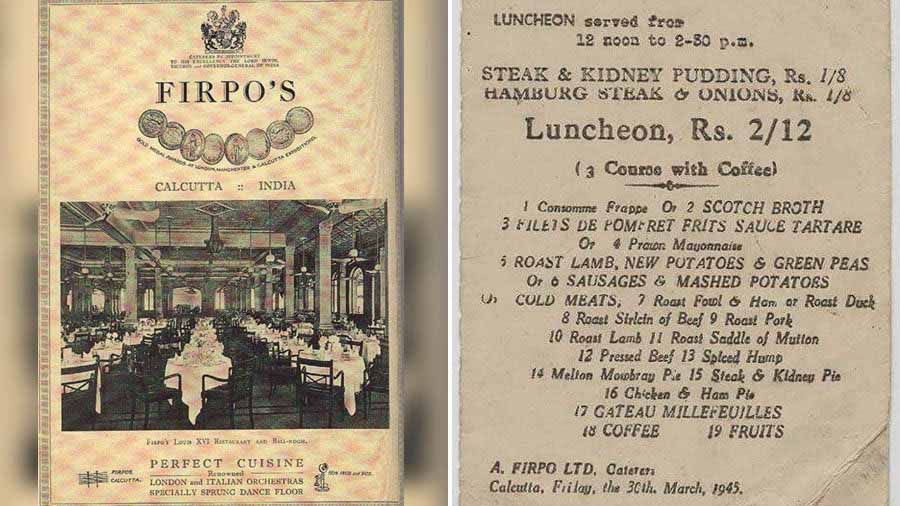
In its heyday, Firpo’s was only second in popularity to Peliti’s Restaurant of Dalhousie Square. (Right) a menu from 1945
Enrico De BarbieriIt is not surprising then that Firpo’s was chosen as the venue of the only civic reception of Netaji, who was at the pinnacle of his political career in 1938. The menu of the tea party is not mentioned anywhere, but the guests are likely to have been served bakery and confectionery items.
The list of distinguished residents of Calcutta who attended the felicitation was published in the Calcutta Municipal Corporation Gazette and included British official Sir George Campbell, British army commander Neville Gerald Littleton, Rev Father Van Neste, Acharya Prafulla Chandra Ray, Nil Ratan Sarkar, Sarat Chandra Bose and his wife, Syama Prasad Mukherjee the vice-chancellor of Calcutta University and later leader of Hindu Maha Sabha, Tushar Kanti Ghosh, the legendary editor of Amrita Bazar Patrika, industrialist Badridas Goenka. Though Rabindranath Tagore did not attend the function, his niece Sarala Devi Chowdhury, an exponent of Hindu nationalism in India and credited by many for setting to tune the last part of Bankim Chandra Chattopadhhay’s Vande Mataram, was reportedly present.
What Netaji said at the felicitation ceremony is not mentioned in any report. But It is interesting to note that many from the long list of eminent guests later parted with Subhash Chandra on political principles.


